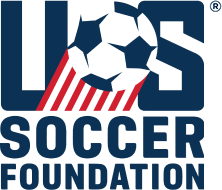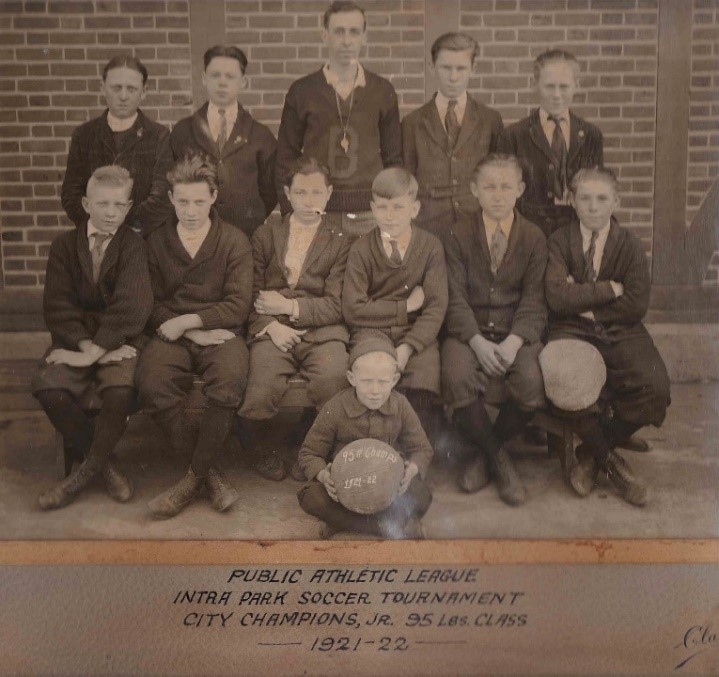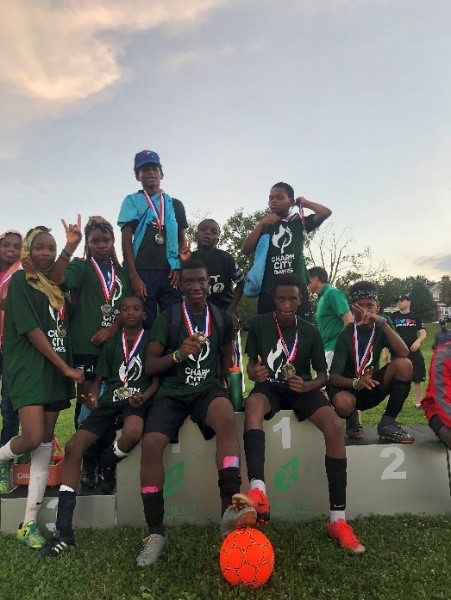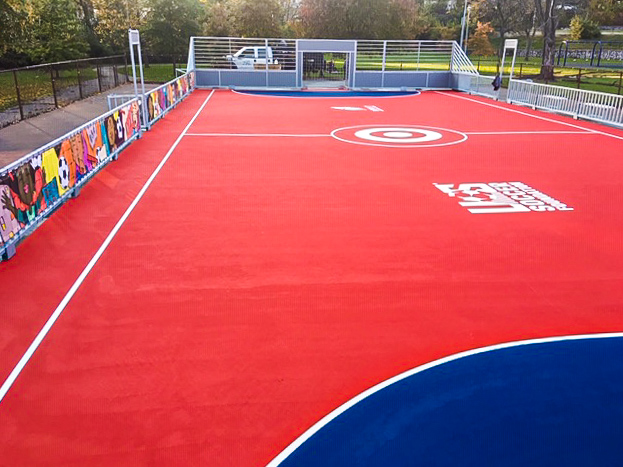

Tim Almaguer serves as the Director of Strategic Partnerships for the Baltimore Recreation and Parks Department, where he’s worked for the last six years. Tim is an avid soccer fan and player, has participated in the U.S. Soccer Foundation’s Soccer for Success training, and played an integral role in bringing mini-pitches to Baltimore through Target’s and the U.S. Soccer Foundation’s national partnership. Tim lives in Baltimore with his wife and two daughters, ages 4 and 7.
During COVID-19 and prescriptive social distancing, there has been an innate desire to get outside beyond one’s four walls and Zoom classes to reconnect with public parks and open spaces, to replete oneself in the healing powers of parks, and to replicate some fragment of normalcy. This habitual need speaks to how public urban parks, their restorative use, and the activities that are embedded in them have become woven into our social tapestry—from outdoor family picnics to cheering on U10 soccer players. Thankfully and more recently, the U.S. Soccer Foundation’s mini-pitches have also become a part of this landscape, as well as a part of the remedy.
In the United States, the curative impact of urban, public parks was realized in the mid-1800s as an antidote to the persistent unhealthy “vapors” or miasma which brought disease to the growing number of city residents. Parks became known as the “Lungs of the City,” cleansing both the dwellings and the dwellers. Public, open-space parks became essential elements in urban design, and it is for those very reasons that we gravitate to them today.
At the turn of the 20th century, new health and societal challenges arose, and a new therapy was again found in city parks. This time, they played a more active role rather than taking on a pastoral view. As American cities became more densely populated due to the country’s industrial growth, streets and housing become overcrowded, detrimentally affecting children. Many children were playing unsupervised in unsafe streets and delinquency became the byproduct.
To address this social breakdown, a new era of social activism evolved. The Progressive Movement during the early 1900s harnessed the power of civil society to provide supervised recreation and play for the city’s children, many of whom had migrated from the local countryside or from Europe and beyond. In Baltimore, these ideals birthed the “Playground Athletic League” (PAL), which built a new landscape of playgrounds and athletic fields as well as organized youth sports programs to activate these spaces. Hundreds of playground leaders and coaches were enlisted to teach healthy play in parks, providing not only physical benefits but also teaching social and moral lessons.

One of the first competitive sports played during the era of the Playground Athletic League (1908-1936) was soccer. This sport was popular with many of the immigrant children who had recently arrived in the United States from Ireland and Germany. Soccer leagues and tournaments were played in all of Baltimore’s major city parks such as Patterson, Riverside, Easterwood, and Clifton Parks. Teams were fielded based on “weight” classes with team names such as the “Odd Sox,” “Cliffords,” and “Creo’s.”
In the 1940s, these youth sports and efforts were transferred to city government and became the city’s Department of Recreation, coupled with the Parks Department. Today, Baltimore City Recreation and Parks maintains this legacy by providing soccer to children around the city through its 44 recreation centers and at many of its parks and athletic fields. The annual Charm City Games, a citywide, Olympic-style competition for middle school youth, includes a two-day soccer tournament.

Most recently, Baltimore City Recreation & Parks, Target, and the U.S. Soccer Foundation partnered to increase the soccer footprint across Baltimore City with the installation of three mini-pitches. This effort was guided by the same principles that guided the creation of the Playground Athletic League, city recreational programming, and public open space – that is, unfettered access to green oases and the opportunity to play in a safe and nurturing environment. Our mini-pitches were installed at Betty Hyatt, DeSoto, and Farring-Baybrook Parks. These sites were intentionally chosen to serve their wonderfully diverse communities and to provide these same communities with the opportunity to play soccer right in their neighborhoods.
Betty Hyatt Park sits in the historically-diverse Washington Hill community. Today, much like the African American, Irish, and Polish communities before them, the Latinx community has found a home, and the park is central to that experience. The new mini-pitch has been active and alive with adults, families, and kids playing on the open soccer space almost non-stop (pre-COVID-19).
DeSoto Park sits near an industrial area in a community in need of additional health and wellness assets. DeSoto Park is surrounded by an immigrant community with limited access to safe and clean outdoor spaces and recreational programming. The mini-pitch at DeSoto Park creates an excellent opportunity to provide both unstructured and organized soccer programming to a community in need of such mentorship and active fun. Members of a nearby Hari Krishna Temple use the mini-pitch for children’s after-school soccer games and family fun.

Our mini-pitch at Farring-Baybrook Park sits next to the department’s Community Recreation Center and the adjoining elementary and middle schools. This mini-pitch is a welcome addition and adds to the existing soccer facilities at the park, such as the Farring-Baybrook Athletic Field and William J. Myers Indoor Soccer Pavilion. This mini-pitch will be used for the school’s P.E. classes, for the rec center’s afterschool programming, and by the community’s soccer players.
What makes this mini-pitch even more impactful is how it will be used by our department’s Therapeutic Recreational Programs, which is housed at the Farring-Baybrook Community Rec Center and serves Baltimoreans with special needs and disabilities. Children and adults with disabilities are at an increased risk for health issues such as obesity and cardiovascular disease due to low levels of physical activity and limited access to and participation in sports programming. Our Therapeutic Recreation Team make such beneficial sports programming available to participants. Prior to the outbreak, both unified and adaptive soccer programs were enjoyed at the mini-pitch, engaging those with special needs and disabilities in active fun, improving their motor skills and cardiovascular health.
During these extraordinary days, two parallel themes are resonating – that is 1) the imperative to embed social equity into the decision-making process to afford everyone equal opportunities and 2) our collective need to reconnect to community and to play! Historically, public open spaces, leisure, and recreation were the progressive panacea to many of these social ills. Today, our public parks and play spaces are even more relevant and impactful. Baltimore’s mini-pitches provide an accessible opportunity to unify our diverse communities to enjoy and play the world’s game of soccer. Whether they were born and raised in Highlandtown, Harlem Park, are from Tegucigalpa, Honduras, or Kinshasa in the Democratic Republic of the Congo, all are welcome.
The U.S. Soccer Foundation has installed 300 mini-pitches across the country over the last five years. Follow this link to learn more about Safe Places to Play mini-pitches. To learn more about the U.S. Soccer Foundation’s partnership with Target, click here.